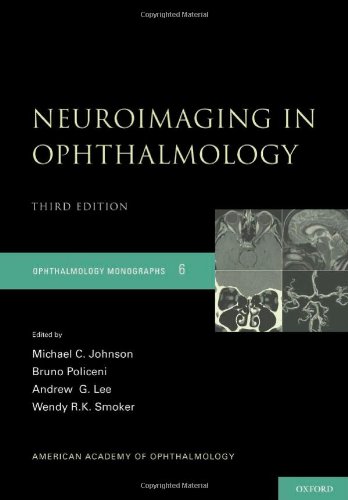مشاهده سبد خرید “Depression and Drugs: The Neurobehavioral Structure of a Psychological Storm 2013” به سبد خرید شما اضافه شد.
Neuroimaging in Ophthalmology 2011
دانلود کتاب پزشکی تصویربرداری عصبی در چشم پزشکی
| نویسنده |
Andrew G. Lee, Bruno Policeni, Michael C. Johnson, Wendy R.K. Smoker |
|---|
| تعداد صفحهها |
115 |
|---|---|
| نوع فایل |
|
| حجم |
5 Mb |
| سال انتشار |
2011 |
89,000 تومان
دانلود ۳۰.۰۰۰ کتاب پزشکی فقط با قیمت یک کتاب و ۹۹ هزار تومان !
توضیحات
چشم پزشکان اغلب اولین پزشکانی هستند که بیمار دارای ضایعه ساختاری داخل چشمی یا داخل جمجمه ای را ارزیابی می کنند. این موقعیت منحصربهفرد درک مکانیکهای اساسی، نشانهها و موارد منع مصرف موجود برای مطالعات تصویربرداری مداری و عصبی (مانند توموگرافی کامپیوتری و تصویربرداری تشدید مغناطیسی) و همچنین هرگونه مطالعه ویژهای که ممکن است برای ارزیابی کامل لازم باشد را به ویژه مهم میسازد. مشکوک آسيب شناسي. برای آنها به همان اندازه مهم است که بتوانند سؤالات تصویربرداری خود را مطرح کنند و اطلاعات بالینی مرتبط را در اختیار رادیولوژیست مترجم قرار دهند. از زمان انتشار نسخه اصلی مطالعه آکادمی چشمپزشکی آمریکا در سال 1992، تکنیکهای جدید و توالیهای اختصاصی توانایی ما را برای تشخیص بیماریهایی در مدار و مغز که برای چشمپزشک مهم هستند، بهبود بخشیده است. در این ویرایش دوم مونوگراف 6، جانسون، پلیسی، لی، و سیگاری محتوای اصلی را بهروزرسانی کرده و ادبیات رادیولوژی عصبی اخیر را در مورد روشهای مختلف قابل استفاده برای توموگرافی کامپیوتری و تصویربرداری رزونانس مغناطیسی برای چشم پزشکی خلاصه میکنند. آنها بر پیشرفت در تصویربرداری عروقی (مانند آنژیوگرافی رزونانس مغناطیسی (MRA)، آنژیوگرافی توموگرافی کامپیوتری (CTA)، ونوگرافی با تشدید مغناطیسی (MRV)، ونوگرافی توموگرافی کامپیوتری (CTV) و توالیهای MR خاص (به عنوان مثال، سرکوب چربی، بازیابی وارونگی کاهش مایعات تاکید میکنند). (FLAIR)، تصویربرداری اکوی یادآور گرادیان (GRE)، تصویربرداری با وزن انتشار (DWI)، تصویربرداری با وزن پرفیوژن (PWI) و توموگرافی پرفیوژن دینامیک (PCT). توصیههای تصویربرداری برای نهادهای چشمی خاص، و نمونههایی از آسیبشناسی تشعشع خاص نشاندهنده نهادهای مرتبط هدف این مطالعه تقویت اهمیت حیاتی ارتباط دقیق، کامل و به موقع -از چشم پزشک تجویز کننده با رادیولوژیست- در مورد یافته های بالینی، تشخیص افتراقی، و محل توپوگرافی فرضی ضایعه مشکوک به منظور رادیولوژیست برای انجام مطالعه تصویربرداری بهینه و در نهایت برای به دست آوردن بهترین تفسیر.
توضیحات(انگلیسی)
Ophthalmologists are often the first clinicians to evaluate a patient harboring an underlying intraorbital or intracranial structural lesion. This unique position makes it particularly important for them to understand the basic mechanics, indications, and contraindications for the available orbital and neuroimaging studies (e.g., CT and MR imaging), as well as any special studies that may be necessary to fully evaluate the suspected pathology. It is equally important for them to be able to communicate their imaging questions and provide relevant clinical information to the interpreting radiologist.Since the publication of the original edition of this American Academy of Ophthalmology Monograph in 1992, new techniques and special sequences have improved our ability to detect pathology in the orbit and brain that are significant for the ophthalmologist. In this second edition of Monograph 6, Johnson, Policeni, Lee, and Smoker have updated the original content and summarized the recent neuroradiologic literature on the various modalities applicable to CT and MR imaging for ophthalmology. They emphasize vascular imaging advances (e.g., MR angiography (MRA), CT angiography (CTA), MR venography (MRV), and CT venography (CTV) and specific MR sequences (e.g., fat suppression, fluid attenuation inversion recovery (FLAIR), gradient recall echo imaging (GRE), diffusion weighted imaging (DWI), perfusion weighted imaging (PWI), and dynamic perfusion CT (PCT)). They have also included tables that outline the indications, best imaging recommendations for specific ophthalmic entities, and examples of specific radiographic pathology that illustrate the relevant entities.The goal of this Monograph is to reinforce the critical importance of accurate, complete, and timely communication--from the prescribing ophthalmologist to the interpreting radiologist--of the clinical findings, differential diagnosis, and presumed topographical location of the suspected lesion in order for the radiologist to perform the optimal imaging study, and ultimately, to receive the best interpretation.




